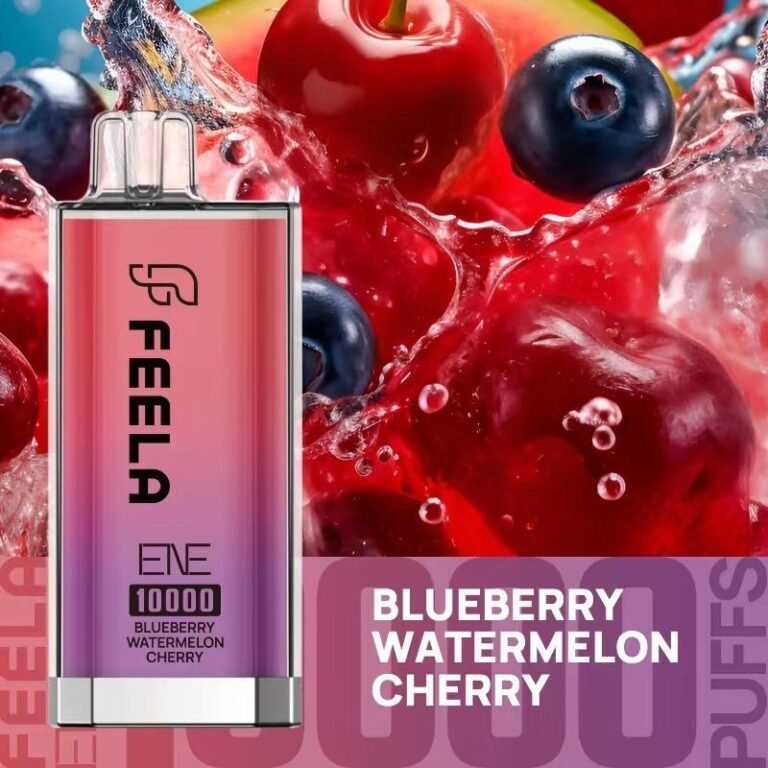Liquid Ice: The Revolutionary Coolant That’s Changing the Game
In an era where technology is advancing at breakneck speed, cooling systems have become more crucial than ever before. Whether it’s high-performance vehicles, state-of-the-art electronics, or renewable energy systems, effective cooling solutions are essential for maintaining performance and longevity. Traditionally, water-based coolants and refrigerants have been used to manage heat, but these solutions often have limitations in terms of efficiency and environmental impact. Enter Liquid Ice Coolant, a game-changing innovation that promises to revolutionize thermal management across multiple industries.
Thank you for reading this post, don't forget to subscribe!Unlike conventional coolants, Liquid Ice offers superior heat dissipation, increased energy efficiency, and a longer lifespan. Its unique properties make it suitable for a wide range of applications, from automotive engines to cutting-edge electronics and even renewable energy systems. In this article, we will explore the science behind Liquid Ice Coolant, how it works, its applications across industries, and its potential to shape the future of cooling technology.
Section 1: What is Liquid Ice Coolant?
Liquid Ice Coolant is a next-generation coolant designed to provide superior heat management in high-performance environments. Unlike traditional coolants, which are typically water-based or rely on chemical refrigerants, Liquid Ice uses a combination of cutting-edge materials that enhance thermal conductivity while offering greater energy efficiency and environmental sustainability.
At its core, Liquid Ice is a specially engineered fluid that has been optimized to transfer heat more effectively than water-based coolants. Its composition often includes a mix of non-toxic compounds, synthetic fluids, and engineered nanoparticles that improve its thermal properties. This allows it to perform well under high thermal loads without degrading over time.
The key advantage of Liquid Ice over conventional coolants is its ability to operate effectively across a broader range of temperatures, including extreme conditions that might cause standard coolants to evaporate or freeze. As a result, it is ideal for applications in high-heat environments like automotive engines, high-performance computing, and industrial machinery.
Section 2: How Does Liquid Ice Coolant Work?
To understand how Liquid Ice Coolant works, it’s essential to examine its unique properties. The coolant is engineered to enhance heat transfer in a way that traditional coolants cannot match. Traditional water-based coolants rely on simple thermal conductivity to draw heat away from hot components. However, this process is often inefficient when dealing with high-heat systems.
Liquid Ice, on the other hand, uses advanced thermal management technology. One of the key mechanisms is the use of nanoparticles within the coolant fluid, which dramatically increase the surface area for heat absorption and transfer. These nanoparticles, combined with the base fluid, allow Liquid Ice to absorb and disperse heat more rapidly and effectively than conventional coolants.
Additionally, the viscosity and chemical composition of Liquid Ice prevent the coolant from freezing or evaporating under extreme temperatures. This makes it more reliable and versatile, especially for applications in industries where temperature extremes are common, such as aerospace, automotive, and high-performance electronics.
Section 3: Applications of Liquid Ice Coolant
Liquid Ice Coolant is not just a one-size-fits-all solution; its versatility makes it applicable across multiple industries that rely heavily on cooling systems. Let’s look at some of the primary industries where Liquid Ice is making a significant impact:
1. Automotive Industry:
In the automotive industry, engines and components generate tremendous heat, especially in high-performance vehicles. Liquid Ice Coolant is now being used in automotive cooling systems, providing more efficient thermal management that enhances engine performance and longevity. Whether it’s a luxury sports car or a racing vehicle, the superior cooling capabilities of Liquid Ice ensure that engines operate at optimal temperatures even under intense conditions.
2. Electronics & IT Industry:
As electronic devices become more powerful, managing heat has become a major challenge. High-performance computers, servers, and even gaming consoles generate significant heat, and effective cooling is crucial to prevent damage to sensitive components. Liquid Ice Coolant is now being used in data centers and high-performance computing systems to keep temperatures under control, improving both performance and energy efficiency.
3. Renewable Energy Systems:
With the growth of renewable energy technologies, such as solar panels and wind turbines, managing heat is essential for maximizing energy production and extending equipment life. Liquid Ice is being used in the cooling systems of solar panel installations and energy storage devices to ensure that they operate efficiently in high-temperature environments.
4. Aerospace and Aviation:
In the aerospace industry, maintaining optimal temperatures is vital for the performance of aircraft engines and avionics. Liquid Ice Coolant is being tested for use in aircraft cooling systems, offering more efficient heat management compared to traditional methods. This has the potential to significantly improve the fuel efficiency and longevity of aircraft.
5. Medical Devices and Equipment:
Medical devices, such as MRI machines, lasers, and diagnostic tools, generate significant heat during operation. Liquid Ice Coolant is now being integrated into medical cooling systems to ensure that equipment remains within safe operating temperatures, increasing reliability and extending the life of expensive medical machinery.
Section 4: Advantages of Liquid Ice Coolant
The innovative properties of Liquid Ice Coolant offer several advantages over traditional coolant systems. These benefits are driving its adoption across various industries:
1. Energy Efficiency:
Liquid Ice Coolant operates with greater efficiency than water or chemical-based coolants. Its advanced thermal conductivity reduces the energy required for cooling systems to maintain optimal temperatures. This not only lowers energy consumption but also reduces the carbon footprint associated with cooling operations.
2. Longer Lifespan:
Traditional coolants, such as water and chemical refrigerants, degrade over time, requiring frequent replacement. Liquid Ice, however, is designed for longevity, reducing maintenance costs and downtime in critical systems.
3. Environmental Impact:
Many conventional coolants contain harmful chemicals that contribute to environmental damage. Liquid Ice is typically non-toxic and more eco-friendly, making it a safer choice for industries looking to reduce their environmental impact.
4. Enhanced Performance in Extreme Conditions:
Liquid Ice Coolant performs well in both extreme heat and cold, making it ideal for high-performance environments. Its ability to function efficiently in a broader temperature range gives it a significant edge over traditional coolants.
5. Compatibility:
Liquid Ice can be used in a variety of systems and materials without causing degradation or corrosion. This makes it suitable for a wide range of applications, from automotive engines to delicate medical equipment.
Section 5: Challenges and Limitations
While Liquid Ice Coolant offers numerous advantages, it is not without its challenges. One of the major hurdles is the initial cost of adoption. The technology behind Liquid Ice is still relatively new, and as such, it can be more expensive than traditional coolants. For industries with tight budgets, this can be a barrier to widespread adoption.
Additionally, Liquid Ice Coolant requires specialized equipment and infrastructure to be used effectively, which may pose a challenge for companies that are not already equipped for its use. The coolant’s production is also limited, and scaling up to meet global demand may take time.
Finally, while Liquid Ice is compatible with many systems, there are certain materials and environments where further research is needed to ensure compatibility and efficiency.
Section 6: The Future of Liquid Ice Coolant
The future of Liquid Ice Coolant looks incredibly promising. As industries continue to push the boundaries of technology, the demand for more efficient and reliable cooling solutions will only grow. Research and development in this field are ongoing, and it is expected that Liquid Ice will become even more effective, cost-efficient, and widely available.
With advancements in nanotechnology and fluid dynamics, Liquid Ice may soon be optimized for even more applications. From space exploration to high-performance robotics, the potential for Liquid Ice is vast. As more industries recognize its advantages, we can expect to see increased investment in its development and widespread adoption.
Conclusion
In conclusion, Liquid Ice Coolant represents a revolutionary advancement in thermal management technology. Its superior cooling capabilities, energy efficiency, and eco-friendly composition make it a viable solution for a wide range of industries, including automotive, electronics, aerospace, and renewable energy. While there are challenges to its adoption, the future looks bright for this innovative coolant, and as research continues to evolve, we can expect even greater applications and improvements.
By harnessing the power of Liquid Ice, industries can achieve more efficient cooling, lower energy consumption, and reduced environmental impact. This groundbreaking technology has the potential to redefine the way we think about thermal management in the coming decades.
FAQs
- What makes Liquid Ice Coolant different from traditional coolants?
Liquid Ice Coolant uses engineered nanoparticles and advanced fluids to enhance thermal conductivity, making it more efficient than traditional water-based or chemical coolants. It can perform well in extreme conditions without degrading over time. - Can Liquid Ice Coolant be used in high-temperature environments?
Yes, Liquid Ice Coolant is designed to work effectively in high-heat environments, making it ideal for applications in automotive engines, aerospace, and electronics. - Is Liquid Ice Coolant eco-friendly and sustainable?
Yes, Liquid Ice is typically non-toxic and more environmentally friendly compared to traditional coolants, which often contain harmful chemicals. - What industries are currently using Liquid Ice Coolant?
Liquid Ice is being used in the automotive, electronics, renewable energy, aerospace, and medical industries for its superior cooling properties. - How much does Liquid Ice Coolant cost compared to traditional options?
Liquid Ice Coolant is currently more expensive than traditional coolants, but its long lifespan and efficiency may make it a cost-effective option in the long run. - What are the challenges in manufacturing and scaling Liquid Ice Coolant?
The main challenges are its initial cost, limited production capacity, and the need for specialized equipment for adoption. However, as the technology matures, these issues are expected to be addressed.






